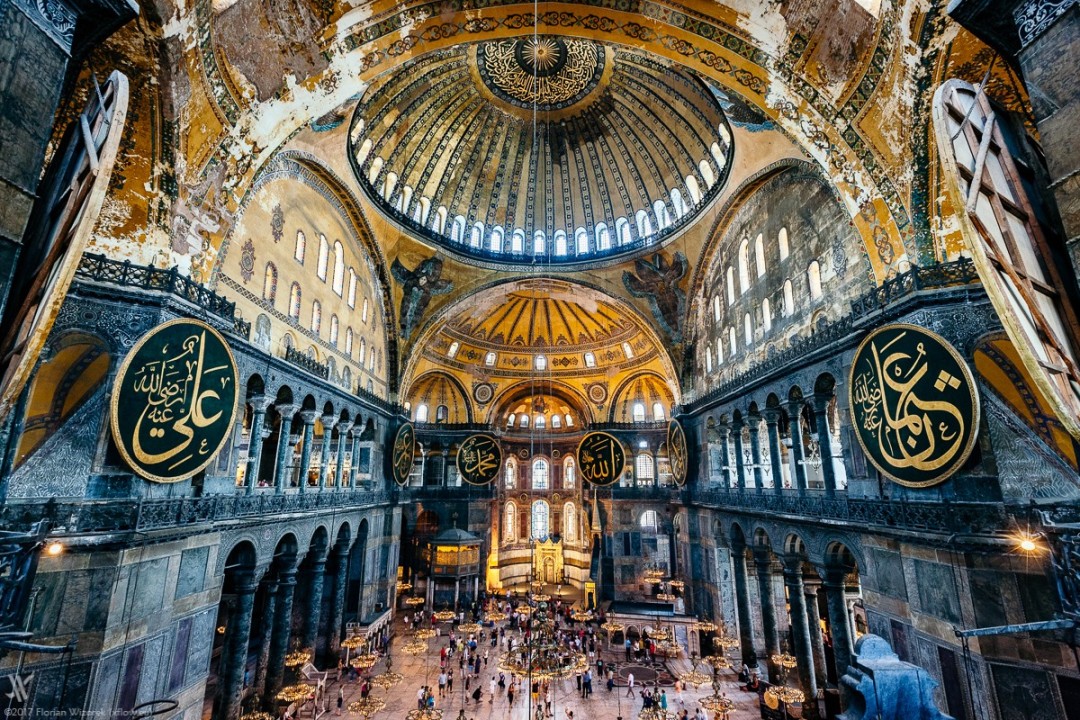
Hagia Sophia: how to preserve our Global Heritage
'Hagia Sophia is an architectural masterpiece and a unique testimony to interactions between Europe and Asia over the centuries. Its status as a museum reflects the universal nature of its heritage, and makes it a powerful symbol for dialog,' said Director-General Audrey Azoulay.
As a history graduate from Moscow State University and a master in Cultural Management, whose major was Cultural Heritage Management, Klaudia CHZHU wants to express her opinion on the decision that Turkish authority made towards one of the World Heritages.
First of all, let's go back to the history of this Cultural Heritage site and we will realize why the Turkish government did not have a moral right to make such a 'destructive' decision.
HAGIA SOPHIA: a heart of the Byzantine Empire
The Church of Saint Sophia or Ἁγία Σοφία in Ancient Greek was founded in 324 AD and construction was finished in 537 AD. Hagia Sophia had remained for many centuries as an ideal of Christianity Church construction. This 'Byzantine style' - a cross-dome type of Church - was taken also by Kievan Rus (Saint Sophia's Cathedral in Kiev, Cathedral of St. Sophia in Novgorod).
However, it is not only about the religious thing, but it is more about PRESERVING the HISTORY OF ART that religion left. Mosaics, miniatures, frescos of Hagia Sophia have enormous value for Art History. From 1453 when Constantinople and the Byzantine Empire fell from Ottoman invasion, the Church was converted into Mosque. Words from the Quran were painted on the walls above Christian frescos, Hagia Sophia combined two cultures. Despite the sad story of the Church, Hagia Sophia now represents Europe and Asia, two cultures in one place that amazes with its unique beauty.
In 1935, Hagia Sophia became a museum, she opened her doors for everybody to enjoy this combination of two outlooks of the world. It became a center of the commemoration of our histories.
In 1985, Hagia Sophia was placed in the World Heritage list of UNESCO meaning this cultural heritage site has outstanding value for humanity, meaning this cultural heritage site is global heritage. In World Heritage list there are cultural/natural/mixed heritages that UNESCO aims to PRESERVE and POPULARIZE worldwide because of its cultural/historical/natural significance.
Converting Hagia Sophia into the mosque, imposing to one of the World Heritages certain religious or political interpretations, in this case, Muslim, it is supposed that Christian heritage of the Hagia Sophia is at risk. Byzantine heritage may be at risk to be damaged or even absolutely destroyed. The public access to Hagia Sophia will be restricted or even closed.
Once, in 1453 the world saw the invasion to the heritage site that already had a history of more than 900 years and the interruption to the culture. However, nowadays, we live in a globalized world, we are much more advanced in humanistic sense and we learned lessons from historical mistakes to not to repeat actions that may lead to destructive consequences. Converting from the museum - a public place for all humanity - into a specific place for doing religious rituals will break the significance of Hagia Sophia that UNESCO promoting.
What are possible solutions for preserving Hagia Sophia as a World Heritage and not only as an affiliation of a certain political group?
- Educate the general public that Cultural Heritage is a Global Heritage. For archeologists, historians, art historians, and people for whom cultural heritage matters to see the current situation is hurting because they know the invaluable significance of Hagia Sophia. To popularize the idea of Global Heritage, we need to educate people and explain why Hagia Sophia deserves to continue to be a museum for all public. Raising general public awareness is a way to spread this issue globally.
- Make a campaign and sign an online petition for UNESCO asking to convert back Hagia Sophia into a museum. If there are a lot of concerned people who want to protect cultural heritage sites as a World Heritage, in this regard, expressing opposition in online petition may influence UNESCO to take further action.
- Take emergency measures right now to better preserve in the future Christian heritage in Hagia Sophia (if it is needed, move some parts from Hagia Sophia and place it in a special museum or a place; using new technologies to document it virtually as we see that some parts of Hagia Sophia may be at risk in the future to be damaged or destroyed; also, attracting general public using User Engagement methods to collectively collect the information for future generations about Hagia Sophia through digital storytelling, co-creation, photographies, crowdsourcing).